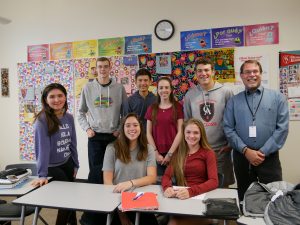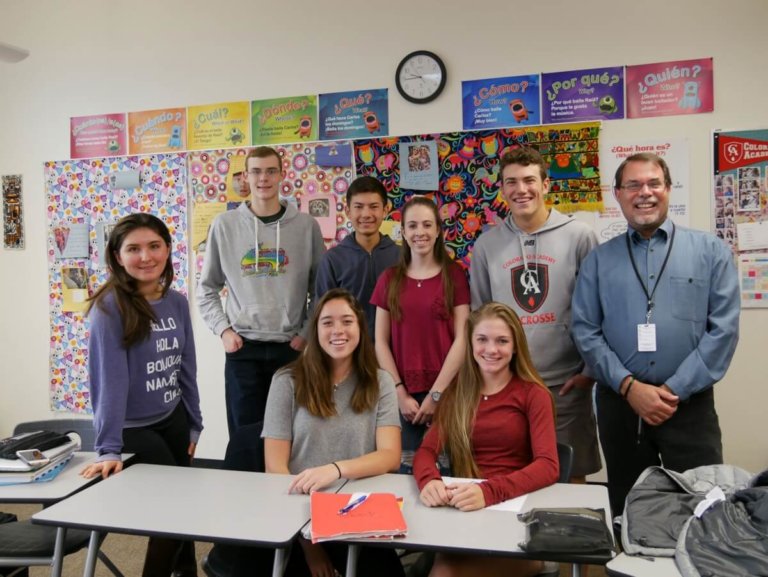When CA Senior Colin Zenge’s mother, Jeanne Zenge, M.D., found she had a communications challenge in her work as a Neonatologist, a Parent-Teacher Conference with Spanish teacher Daniel Lopez provided her with a resolution—at the same time it gave CA students an unexpected opportunity.
Dr. Zenge found that many families she sees speak Spanish as their primary language. It occurred to her that it would be useful to have a pamphlet—written in Spanish—to help her counsel patients prenatally about what might happen if their child is born early. “Often, parents are still dealing with the idea of having a premature birth and are not able to fully process the myriad complicated problems a Neonatologist may describe,” Zenge says. “I thought a written version would be a useful reminder.”
Because hospital medical translators are sometimes very busy, Dr. Zenge considered asking Colin to translate her pamphlet, to help jump-start it to publication. Then, at her Parent-Teacher conference with Daniel Lopez, she took the idea a step further. “Mr. Lopez mentioned how he wanted his students to understand Spanish not just as ‘class work’, but as a valuable tool with real-life implications,” she says. “He embraced the idea of having Colin’s Advanced Placement Spanish class translate the pamphlet.”
“We were already studying health and medicine, and I thought it was a perfect project,” says Daniel Lopez. “It was related to the real world.”
Students divided the brochure into sections and, working in pairs, started translating paragraphs. They found they had their work cut out for them.

“There were a lot of medical terms that we were not familiar with,” says Junior Mari Annest. “For example, how do you translate ‘Bronchopulmonary Dysplasia’ into Spanish?’’
Sophomore Jasmine Bilir points out that translating is challenging. “You don’t just translate word for word,” she says. “You have to change the grammar and the structure of a sentence.”
In one memorable moment, the class realized that they had mixed up pulmones (lungs) and plumas (feathers), translating the English word ‘lungs’ into the Spanish word for ‘feathers.’ They quickly corrected the brochure so that it no longer referred to the development of an infant’s feathers.
Lopez took the opportunity to discuss with the class how their advanced Spanish skills could lead to future opportunities. “We talked about translation as a career,” he says. “They could find many ways to use the language professionally.”
The message hit home. “This was the most interesting class of the year,” says Junior Mac Behrhorst. “Doing the brochure, you feel like you are working for a greater goal.”
Dr. Zenge will still need to get final hospital approval for the Spanish pamphlet, but hopes to have it published soon. “I’m very excited that the students immersed themselves in this project,” she says. “They did a great job with some very difficult topics.”
When Lopez’s students asked him if they would get credit for their work, he had a quick answer.
“You get credit for being good citizens of the world.”
